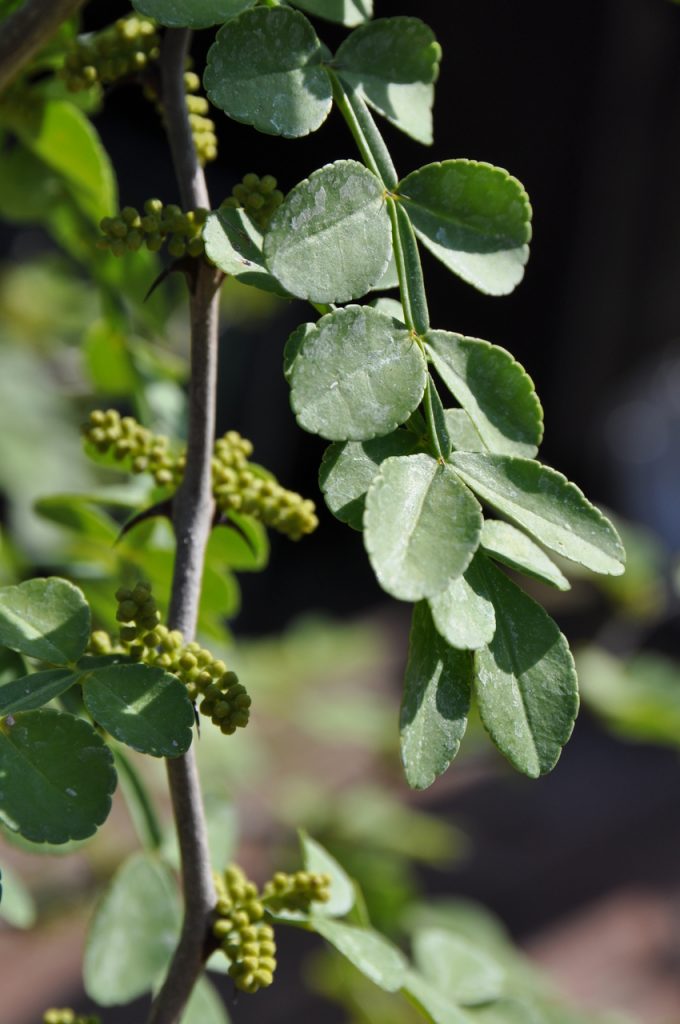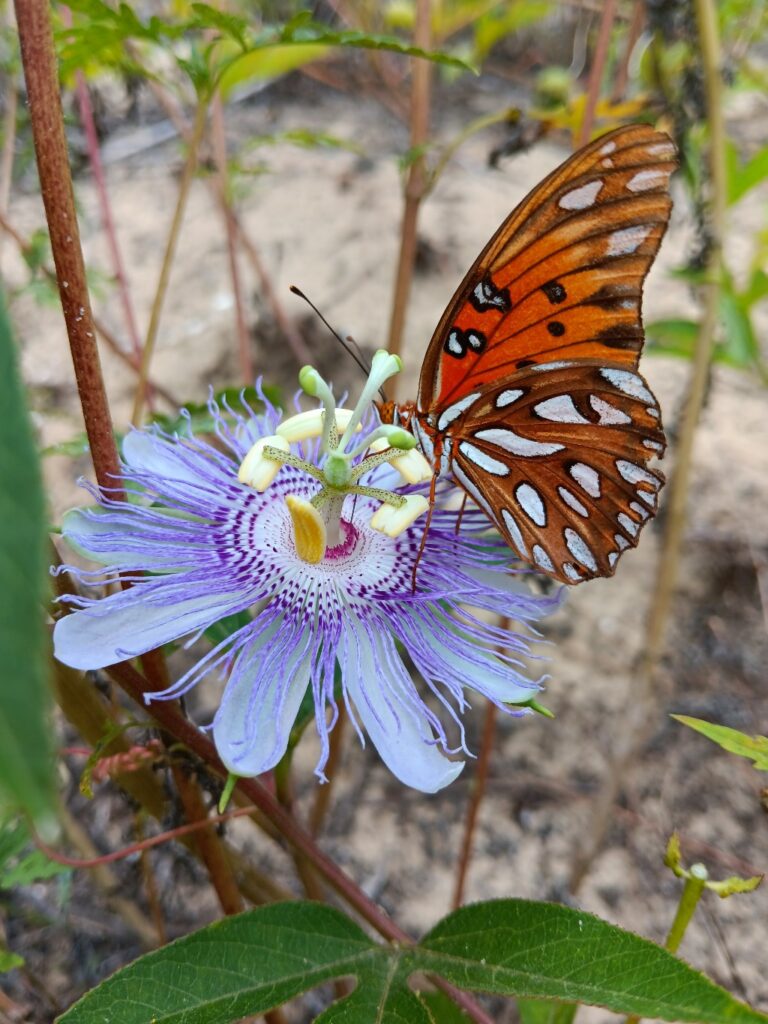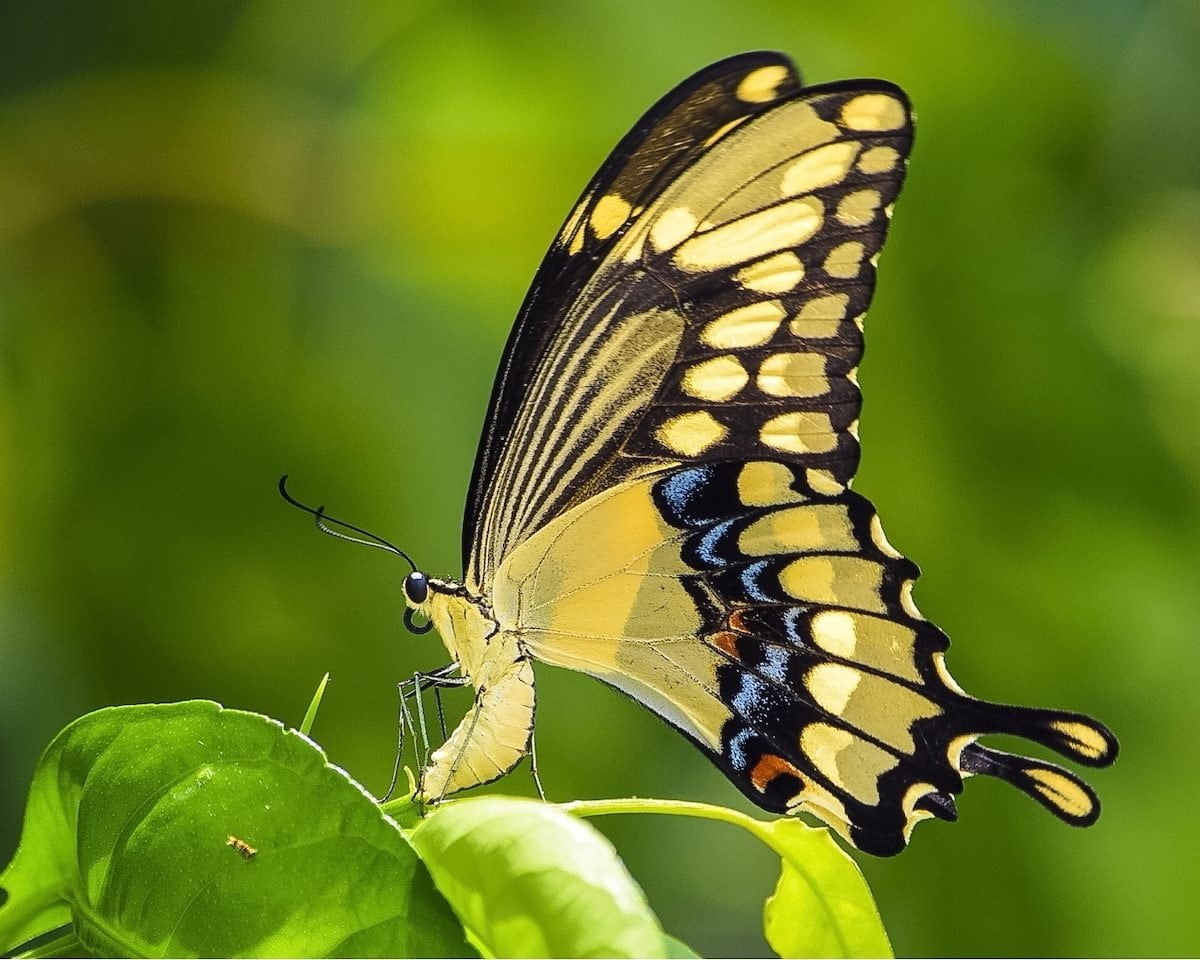The Larval Host Plant for the Eastern Giant Swallowtail butterfly (Papilio cresphontes) is typically the citrus family of plants. The caterpillars of this butterfly species feed on various Citrus trees, including Lemon (Citrus limon), Lime (Citrus aurantifolia), Orange (Citrus sinensis), Grapefruit (Citrus × paradisi), and other related species.
Native Citrus
The Wild Lime (Zanthoxylum fagara), also known as the “Southern Prickly Ash” or “Colima”, is a native citrus species found in the southeastern forest region of the United States. It belongs to the Rutaceae family and is native to Florida, Georgia, Alabama, Mississippi, Louisiana, and other southeastern states.
The Wild Lime is a small to medium-sized tree or shrub that produces small, round, green fruits. The fruits have a citrusy aroma and are often used as a flavoring agent in culinary applications. The tree also has thorny branches, hence the name “Prickly Ash.” The leaves of the Wild Lime have a citrus-like fragrance when crushed.

While the Wild Lime is a native citrus species, it is not closely related to the cultivated citrus varieties like oranges or lemons. It has distinct characteristics and is primarily found in its wild form in natural habitats rather than cultivated for its fruit.

10 Florida-Native Maypop Purple Passionvine Seeds (Passiflora Incarnata)
Maypop Purple Passionvine Passiflora Incarnata seeds. Florida Native. 10 or more seeds.
Giant Swallowtail Butterflies
Giant Swallowtail butterflies are known for their distinct black and yellow pattern, resembling bird droppings when their wings are closed. They are commonly found in North America, particularly in the southern and eastern parts of the United States. The larvae of the Giant Swallowtail butterfly can often be seen munching on the leaves of citrus trees, and they undergo several stages of growth and molting before pupating and emerging as adult butterflies.

